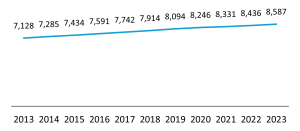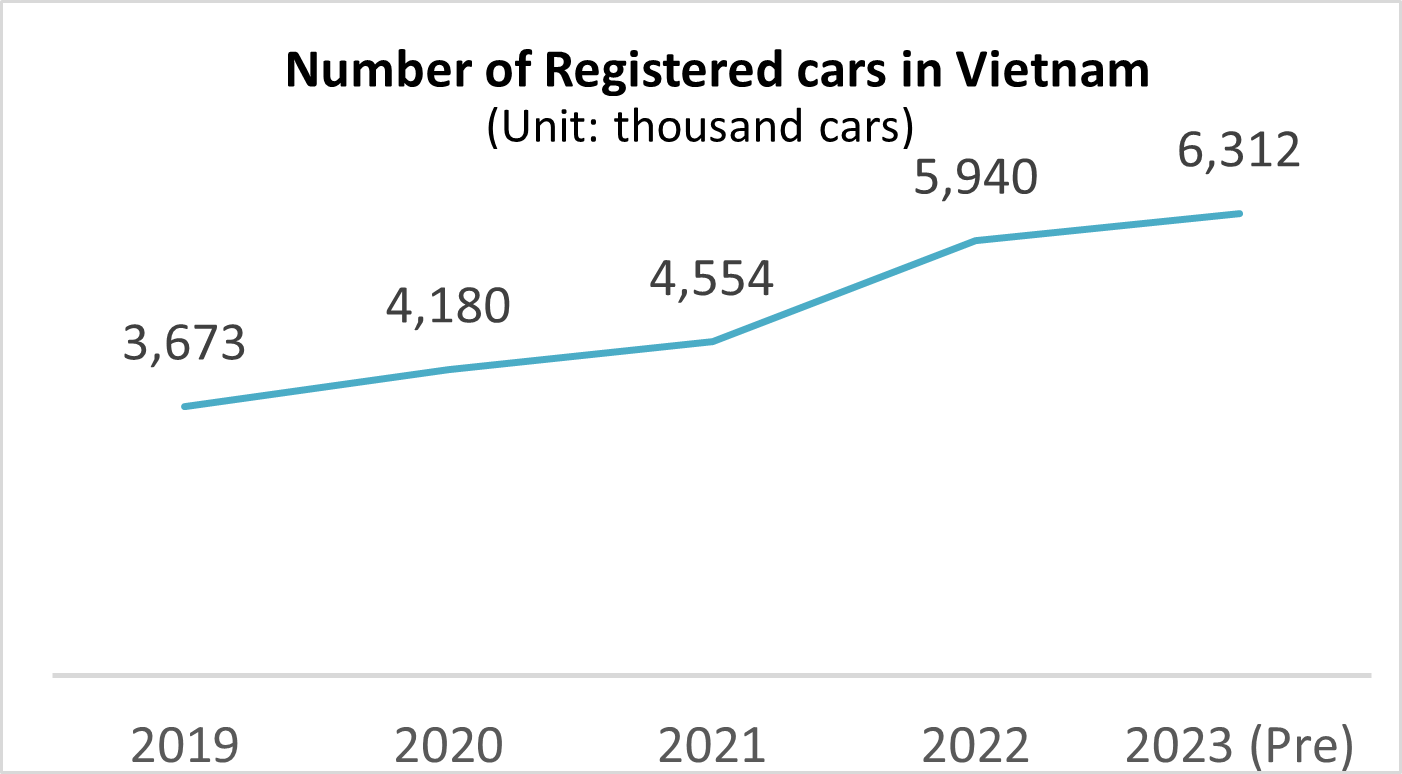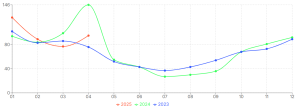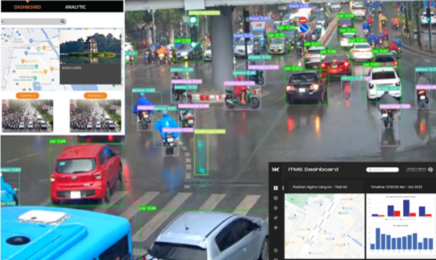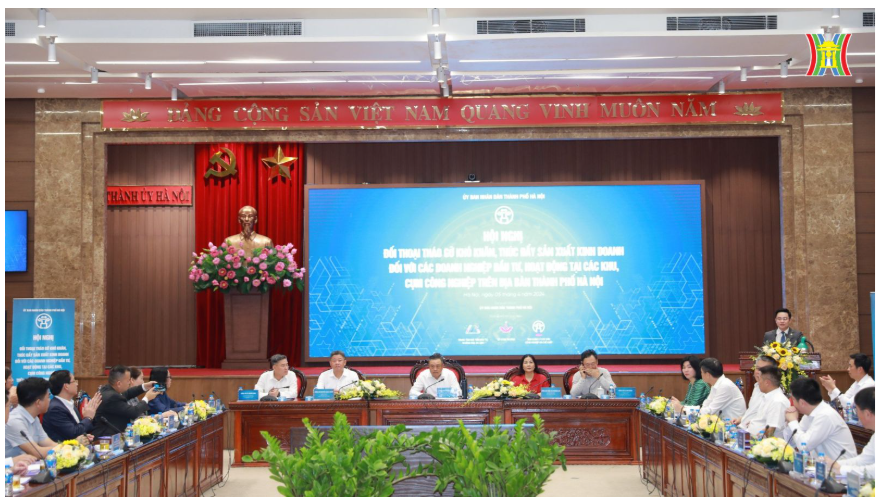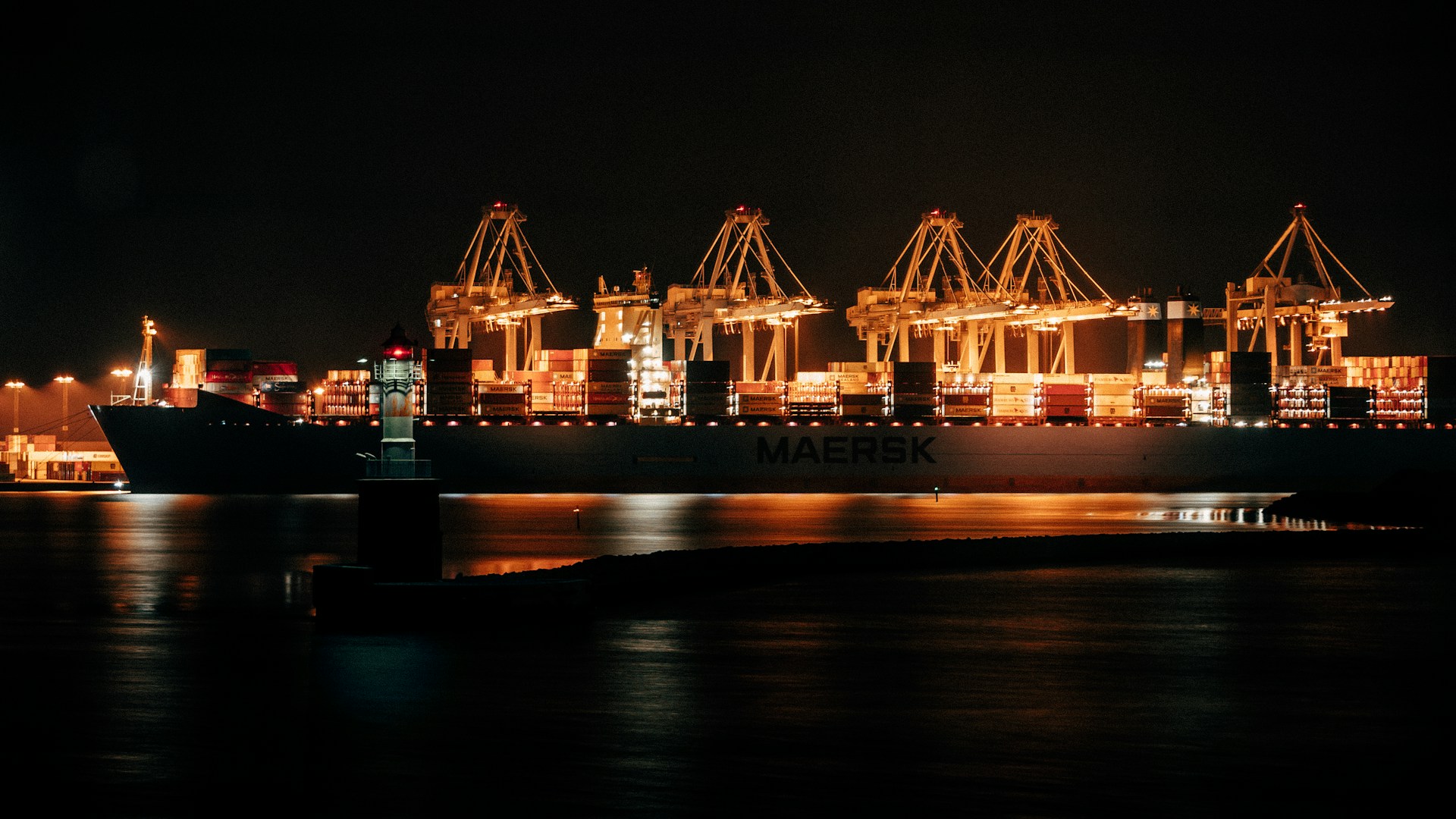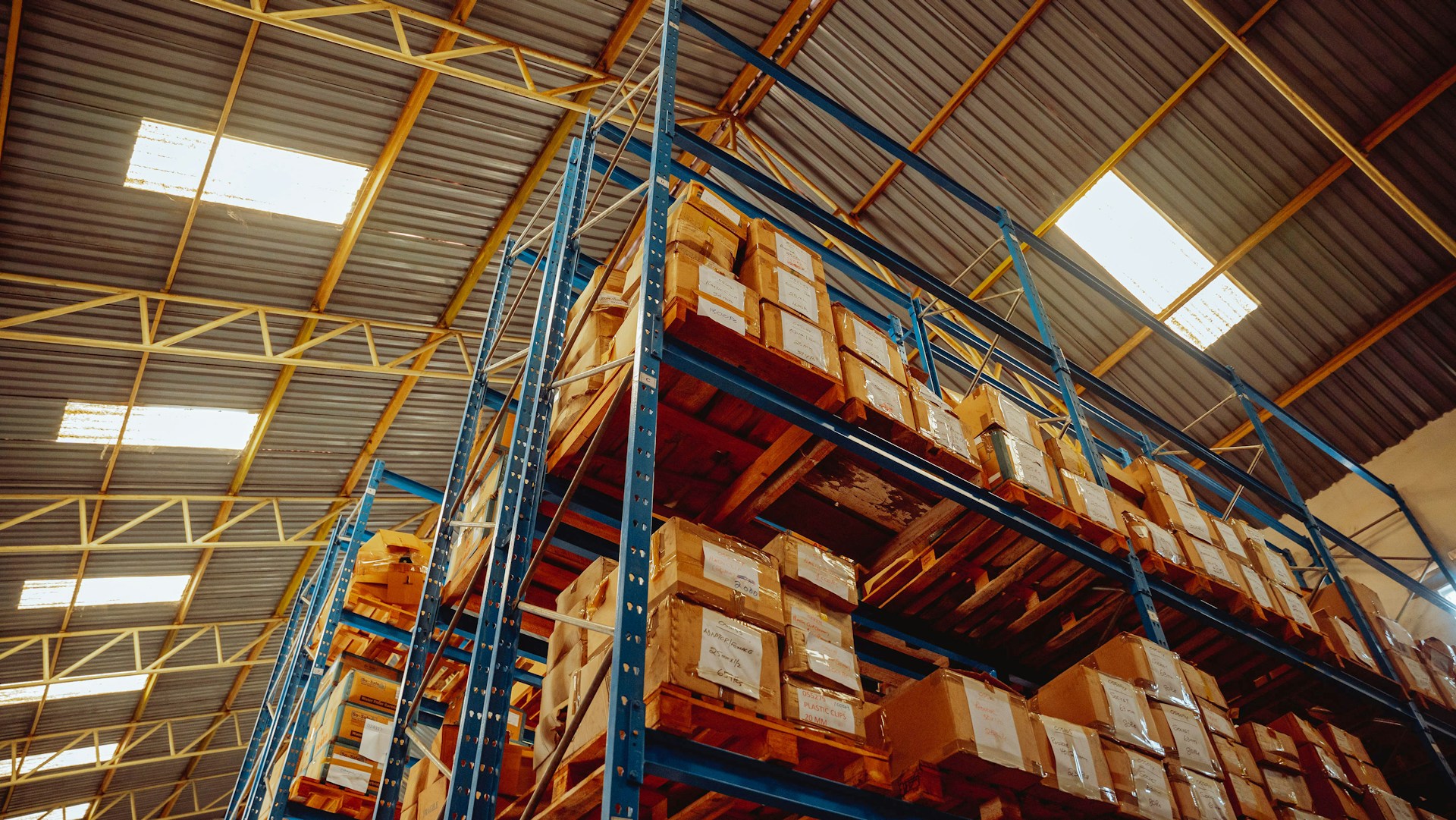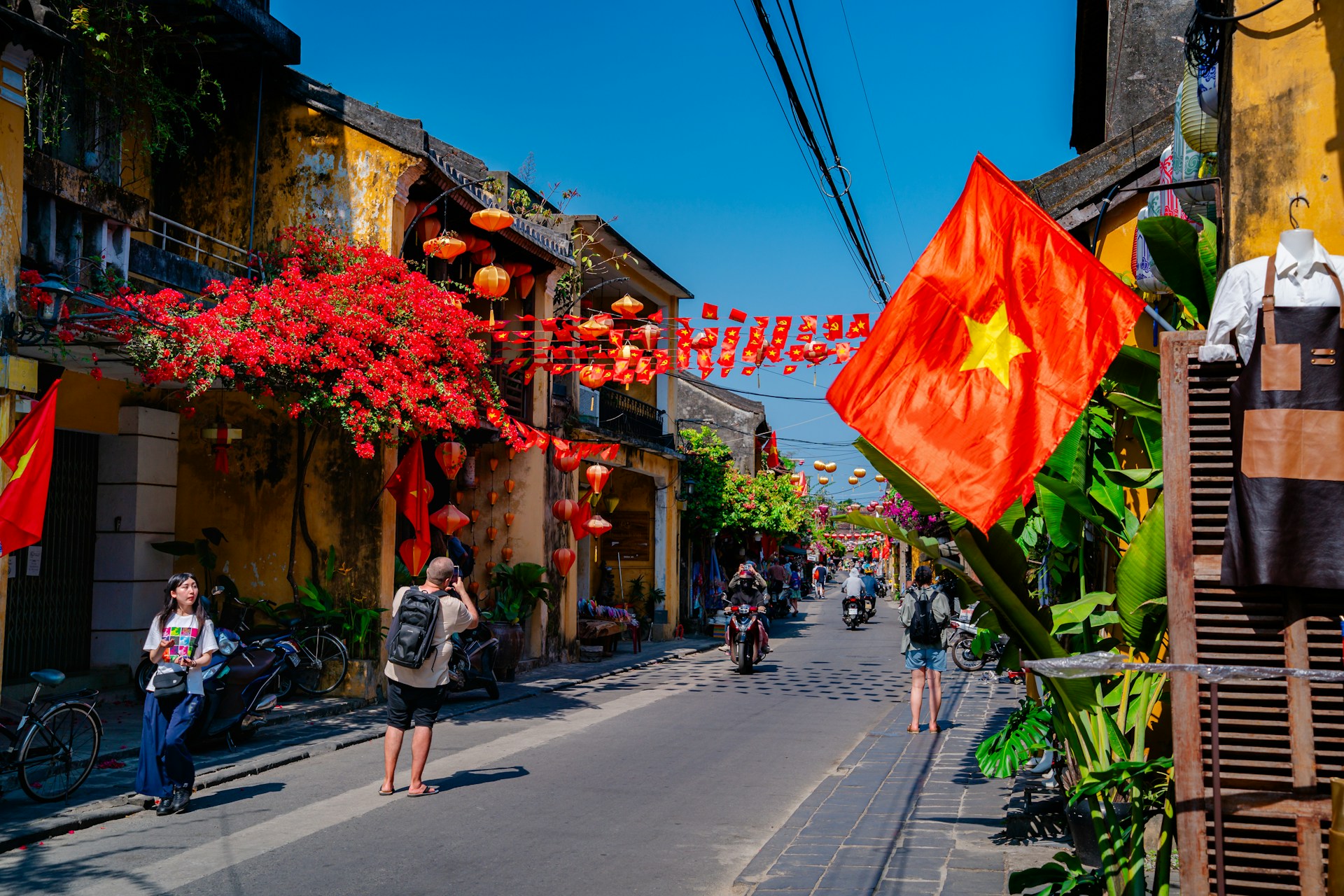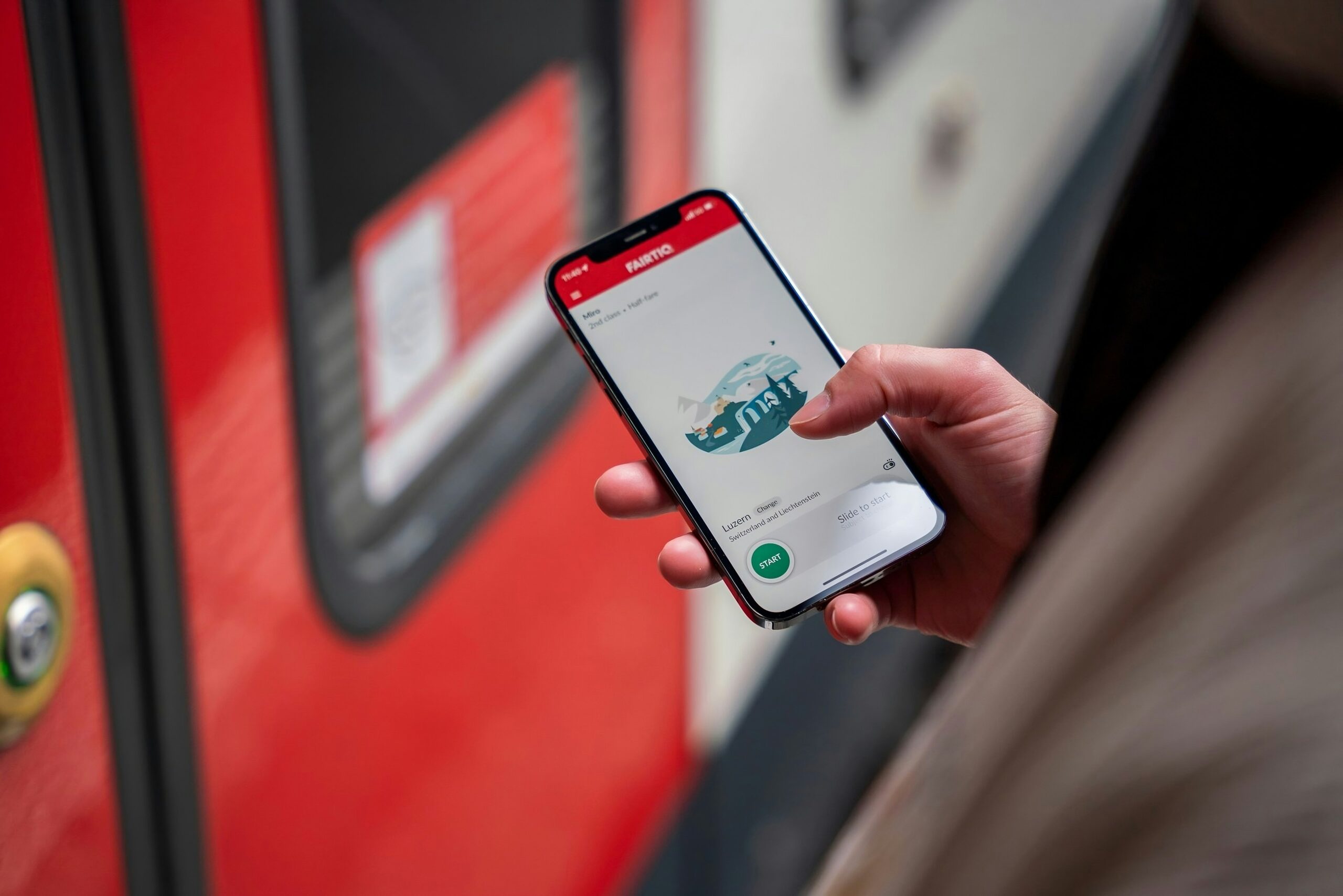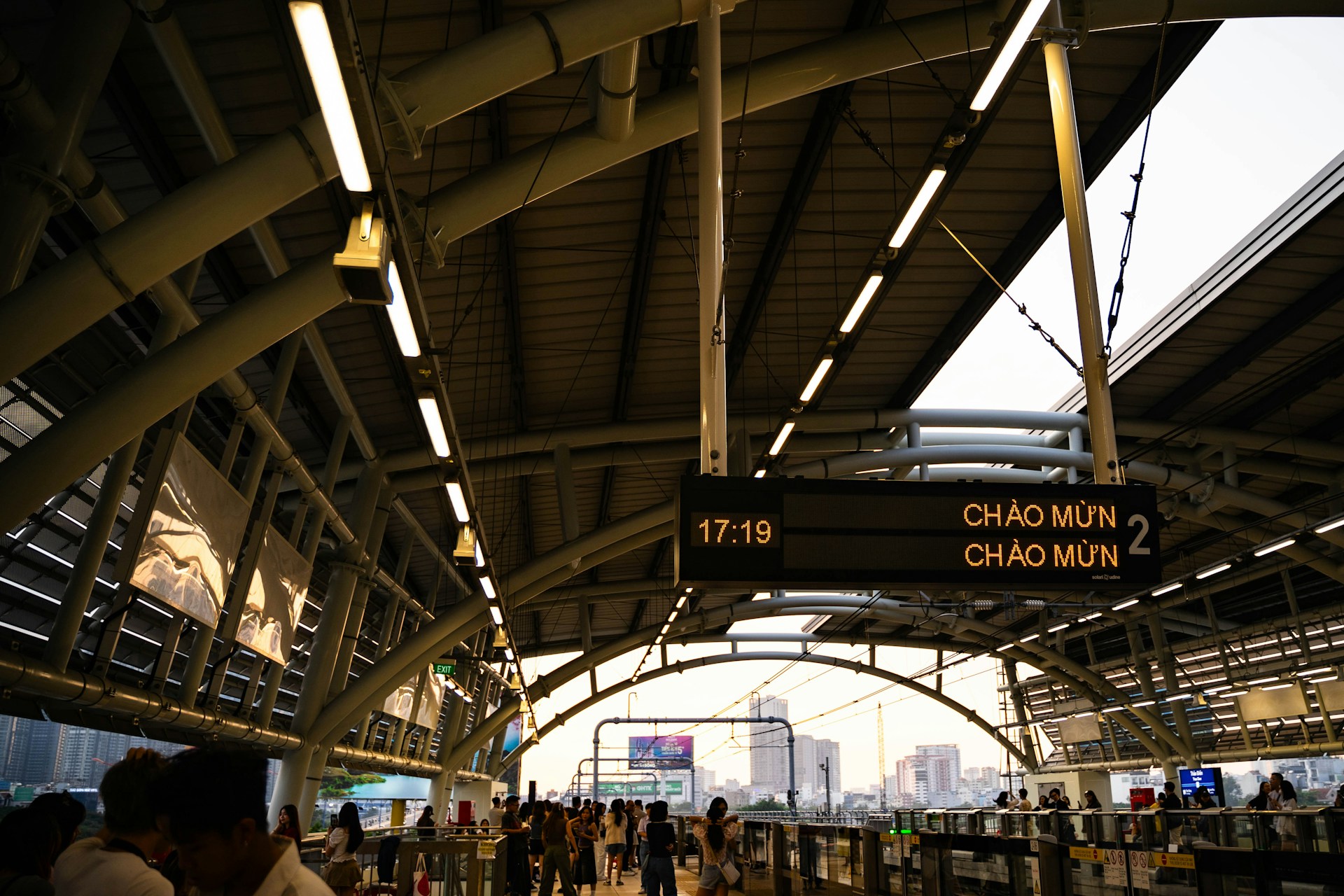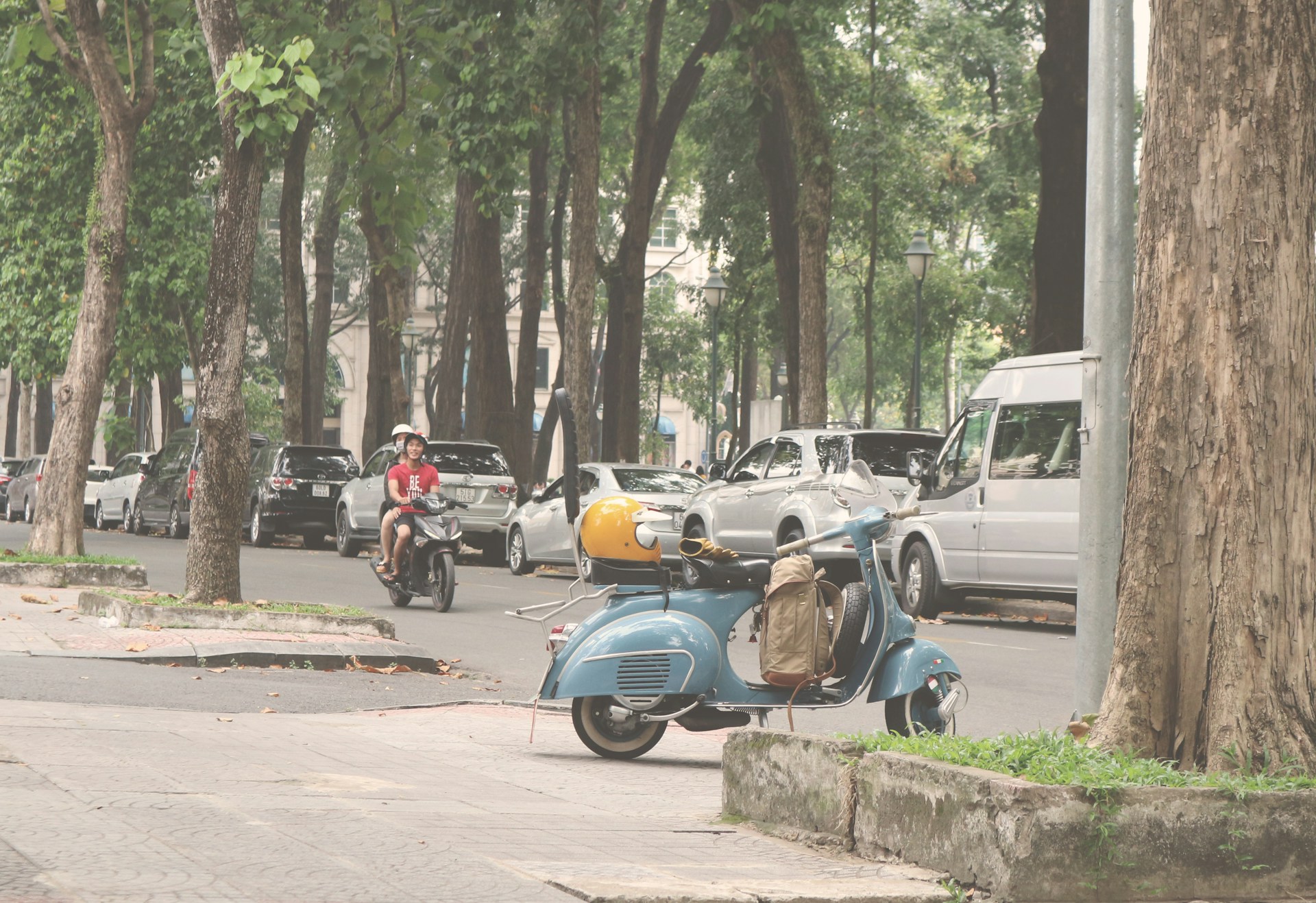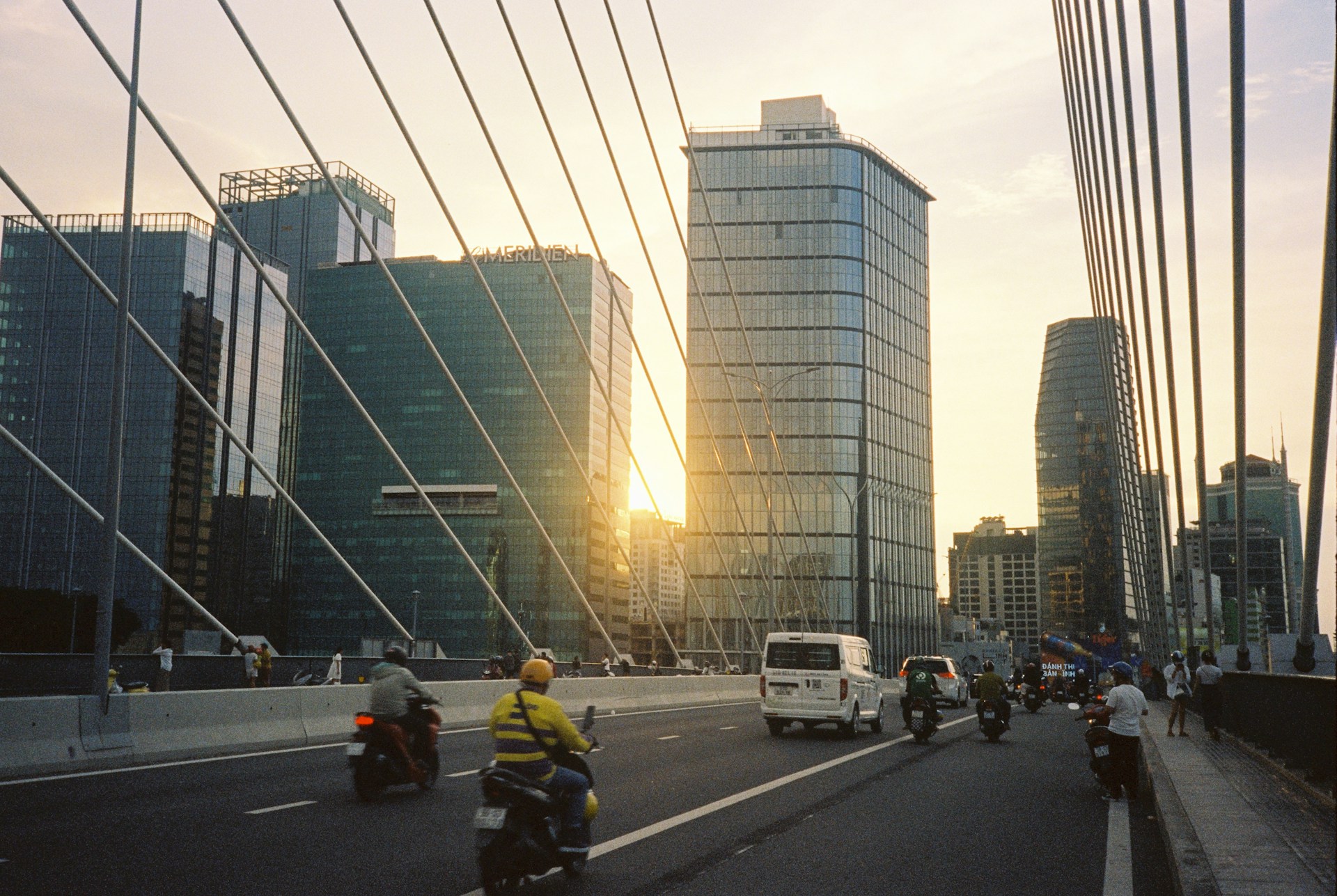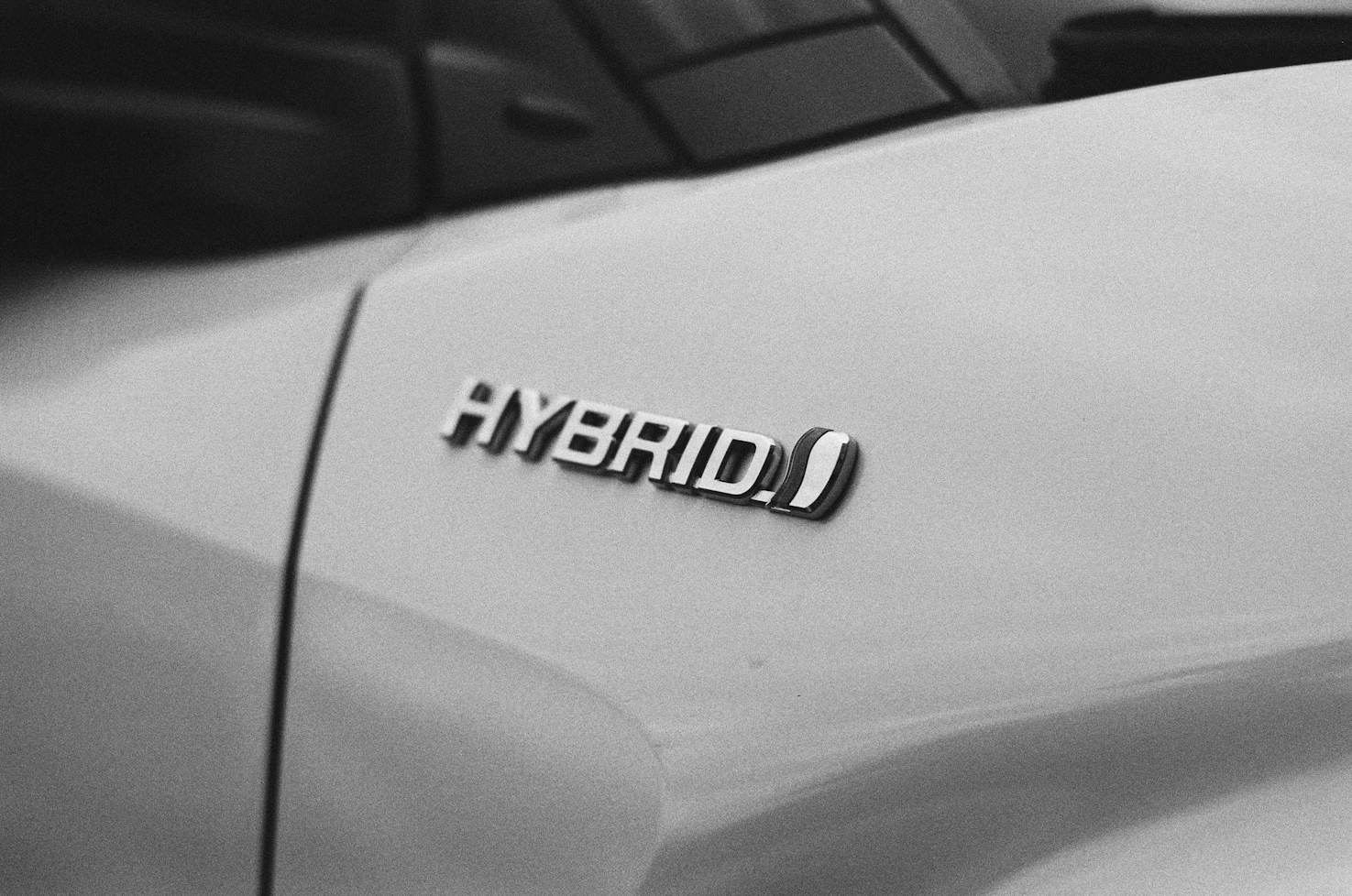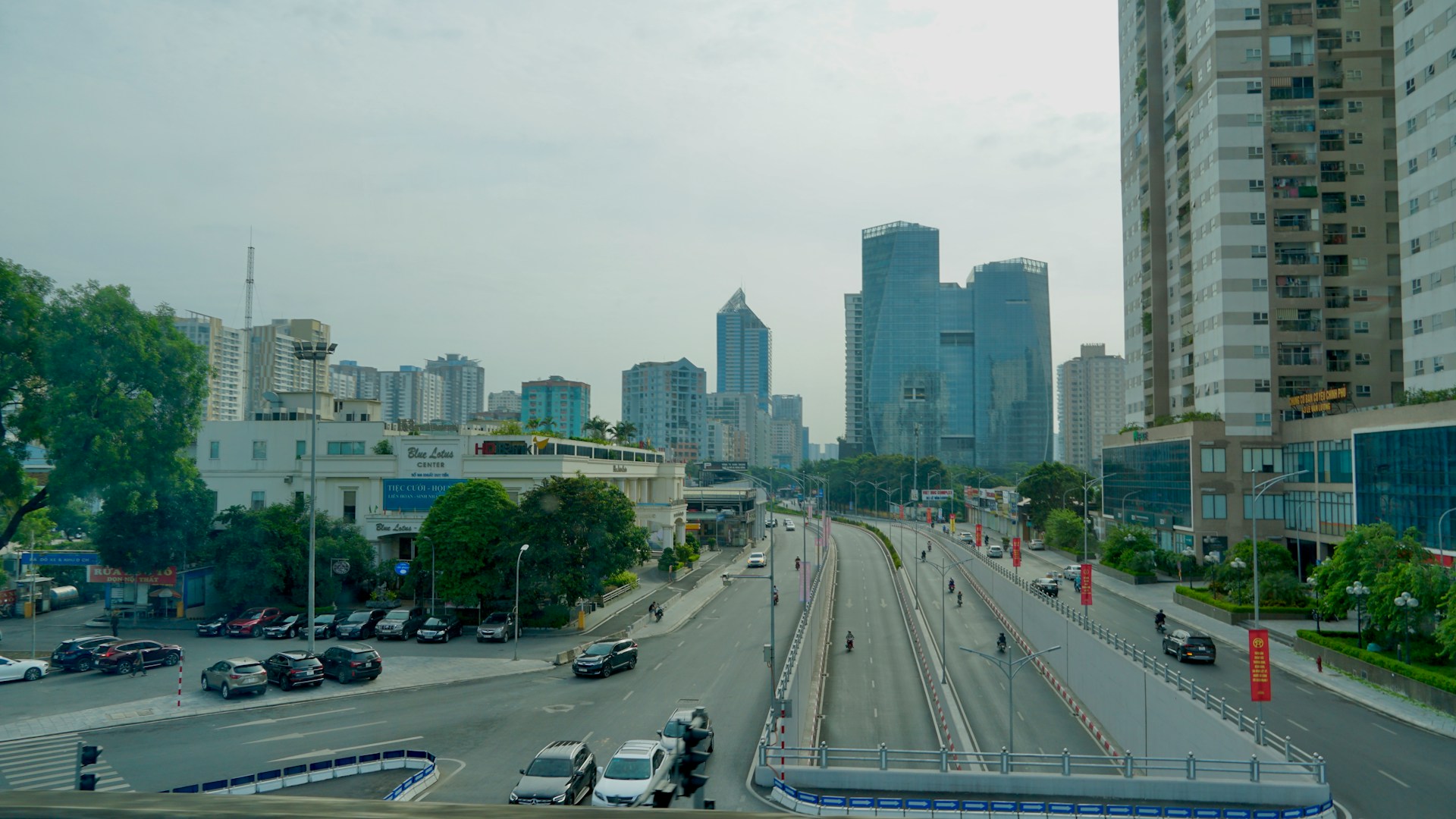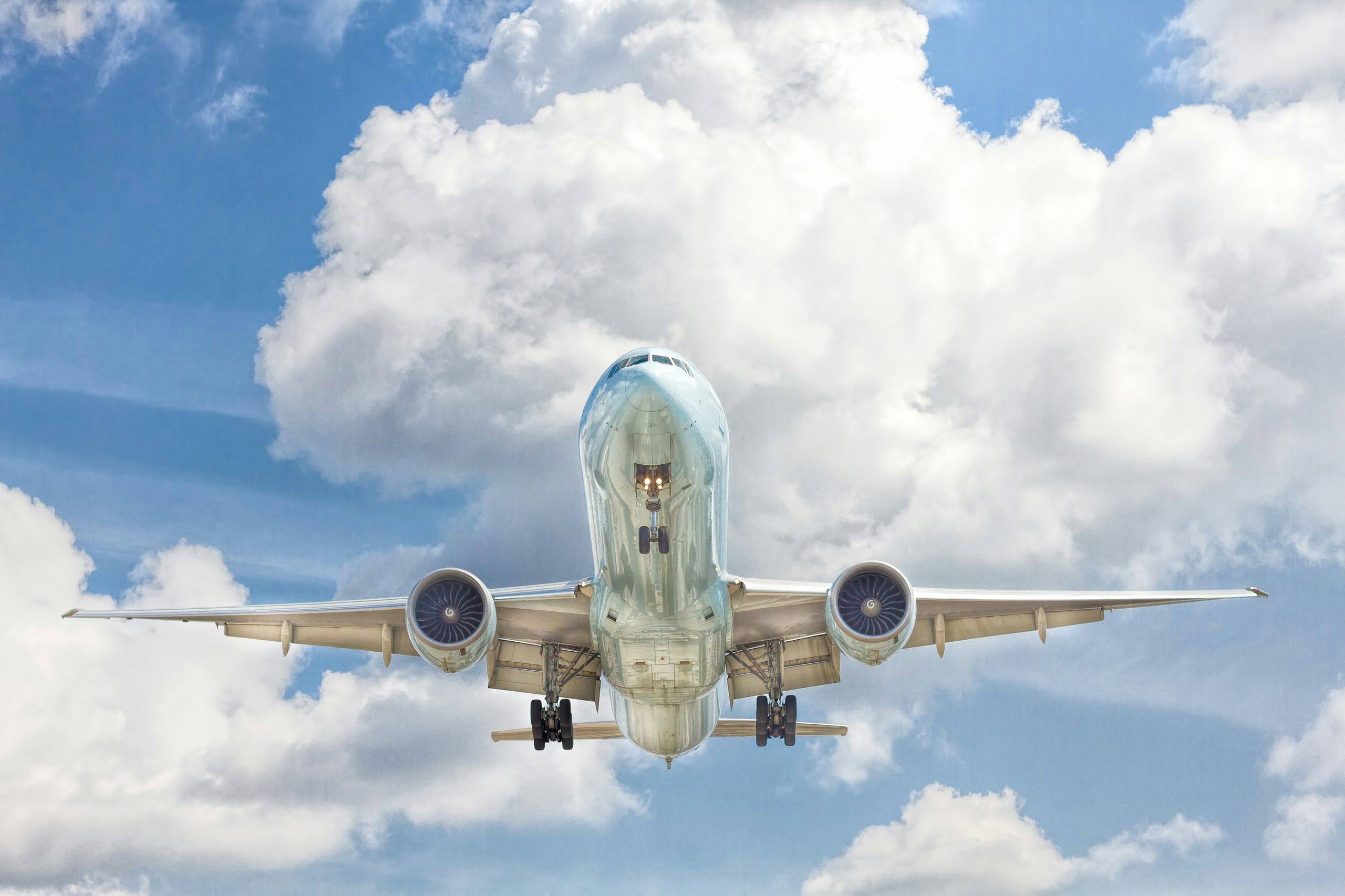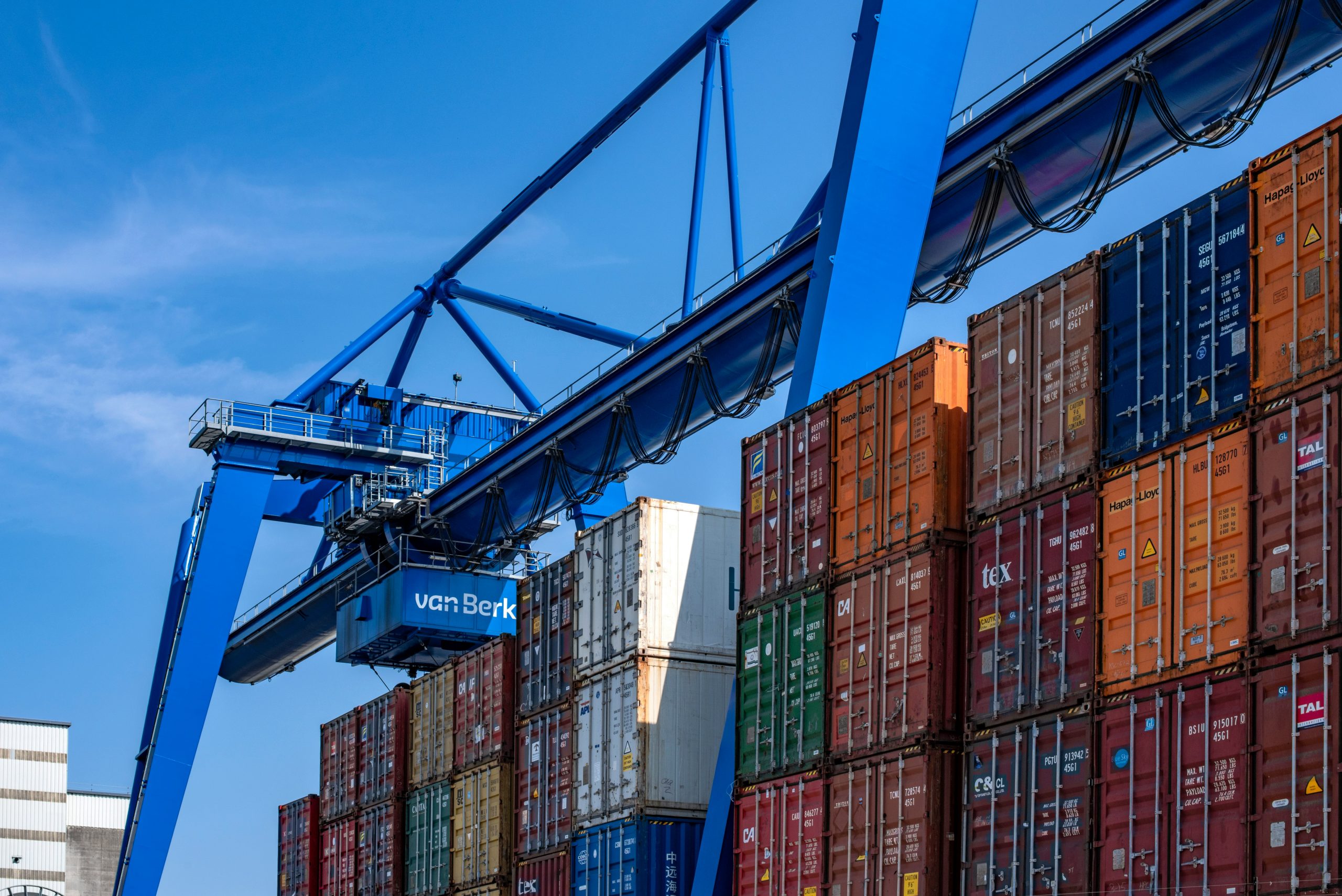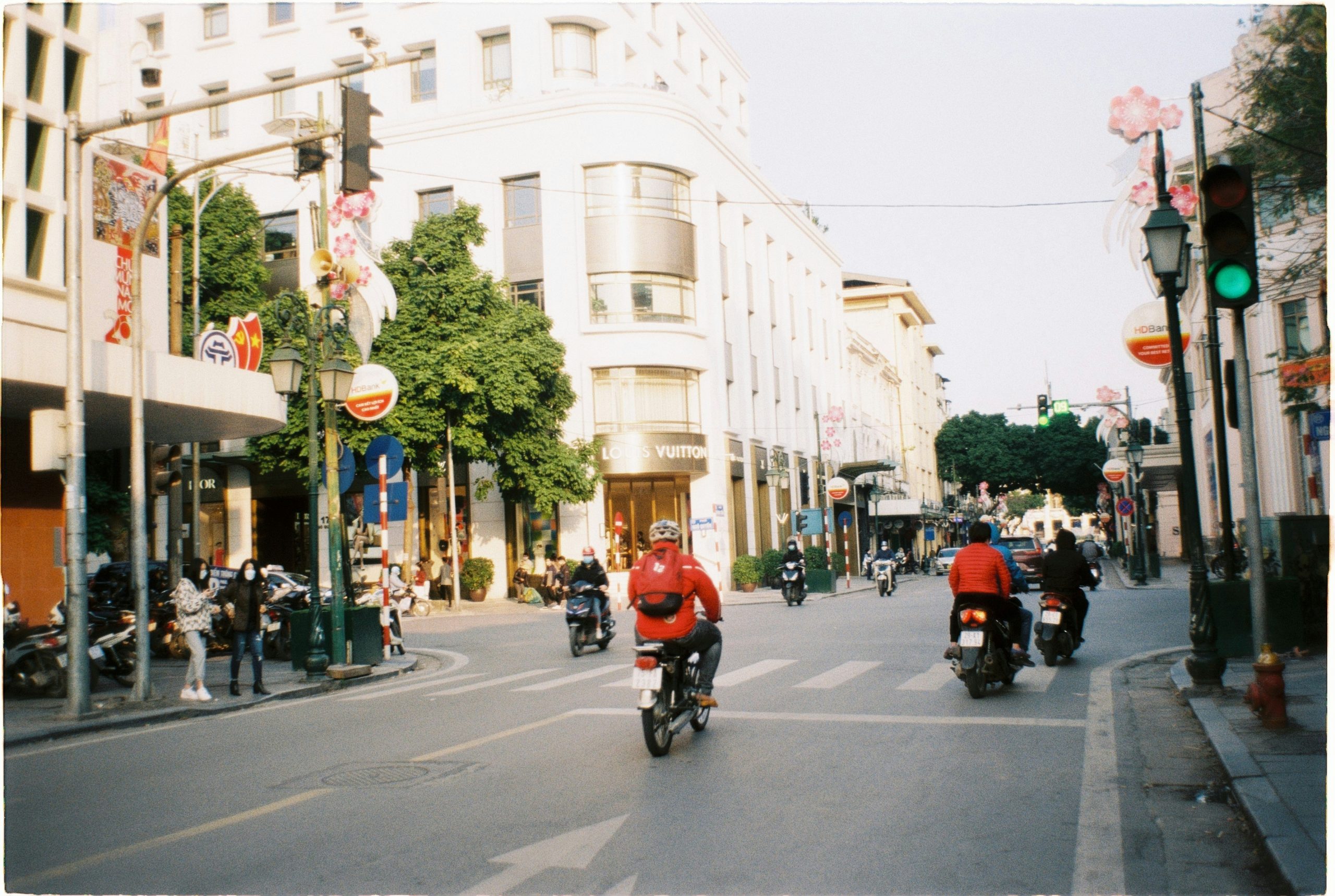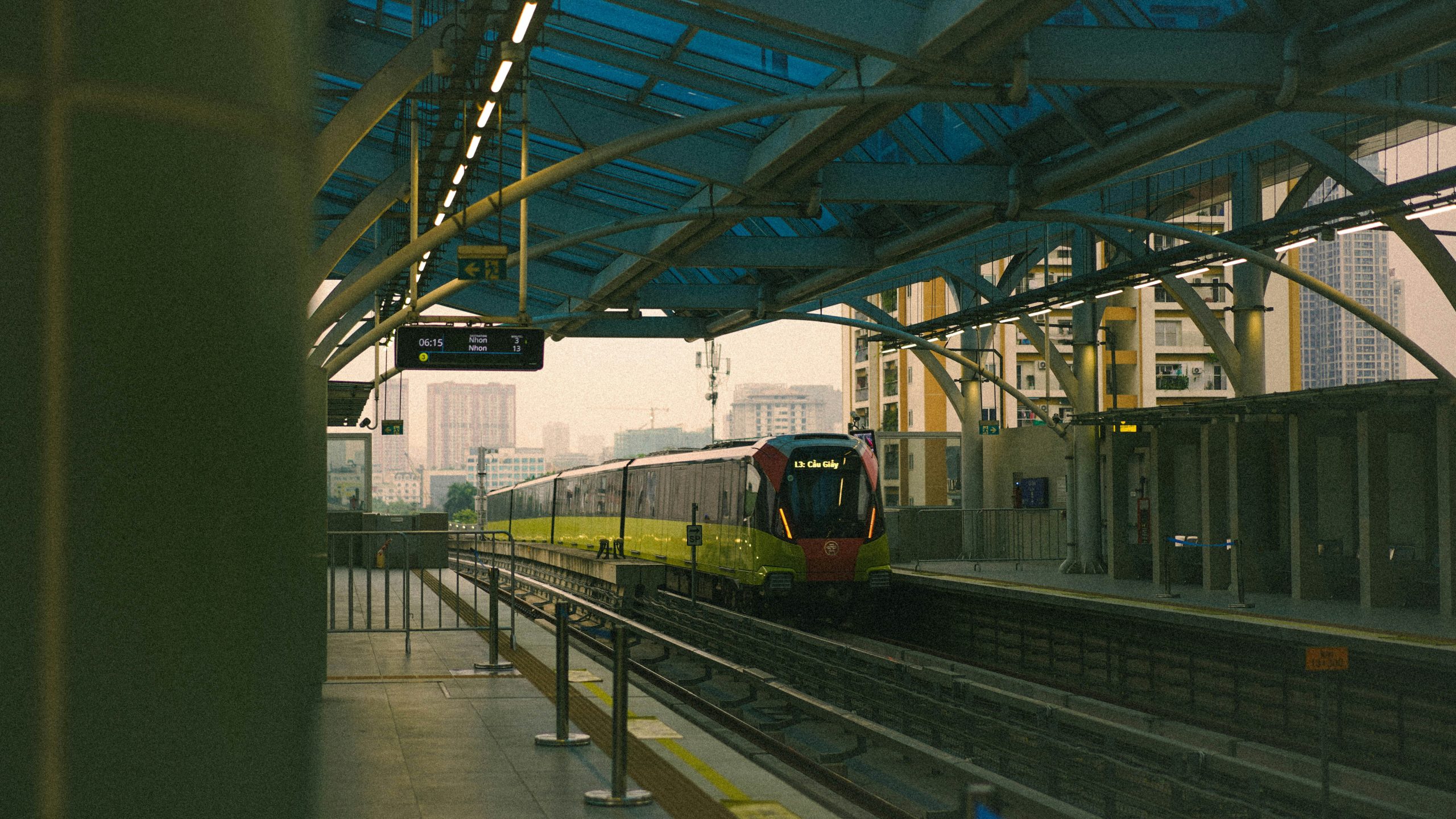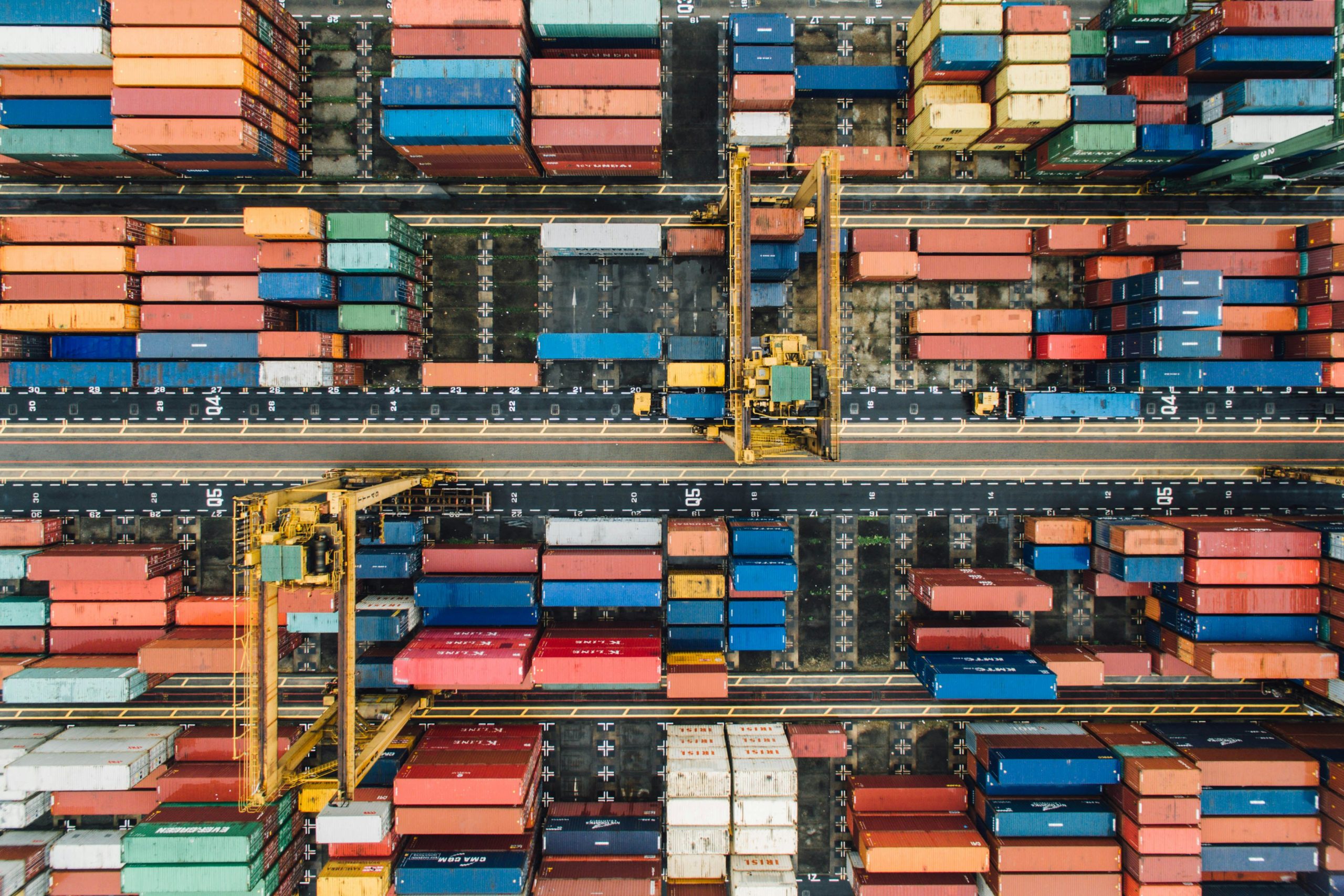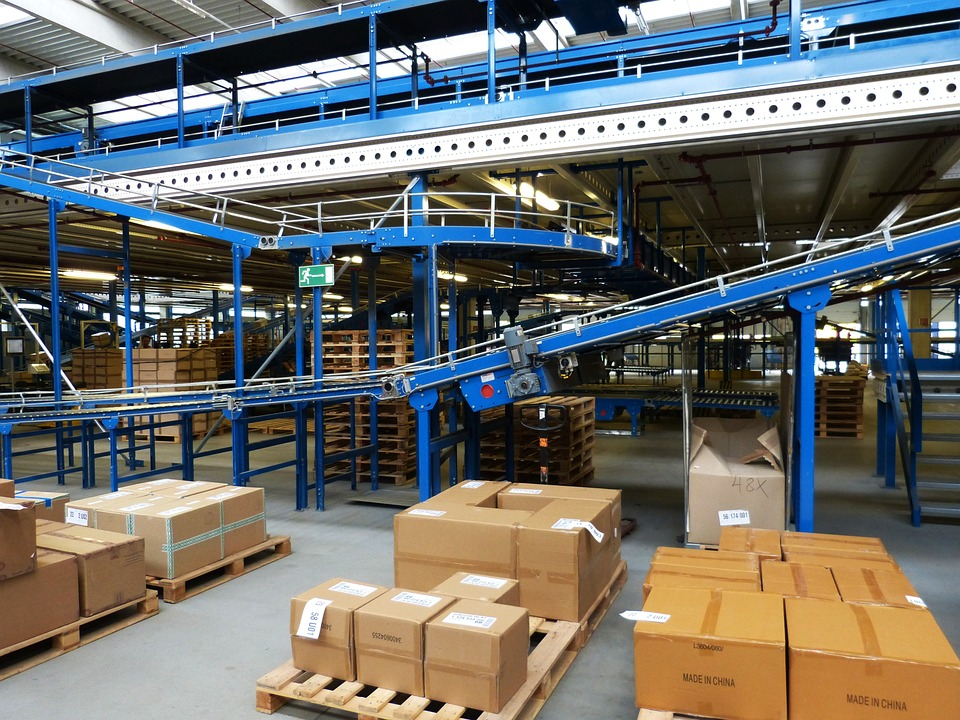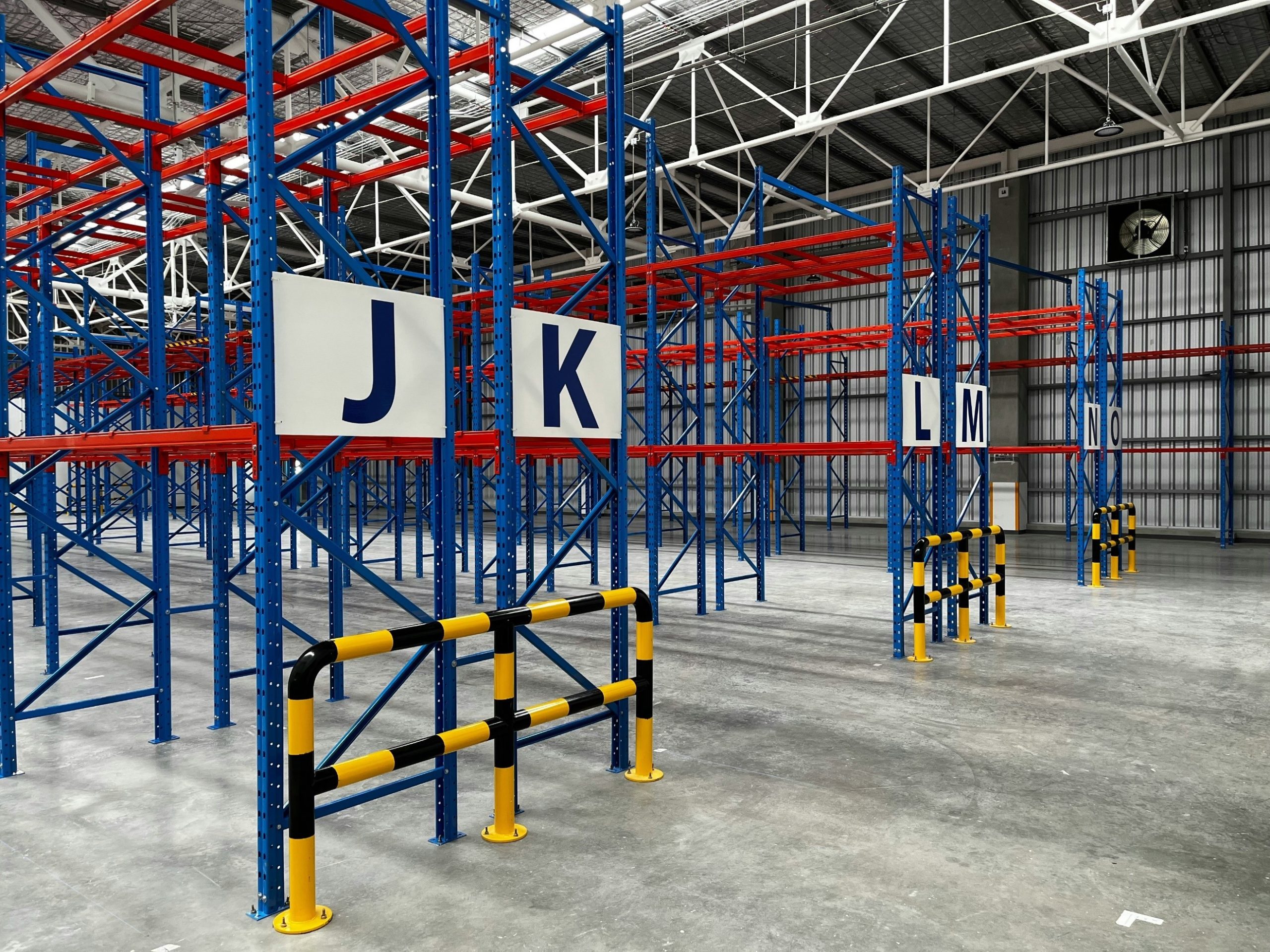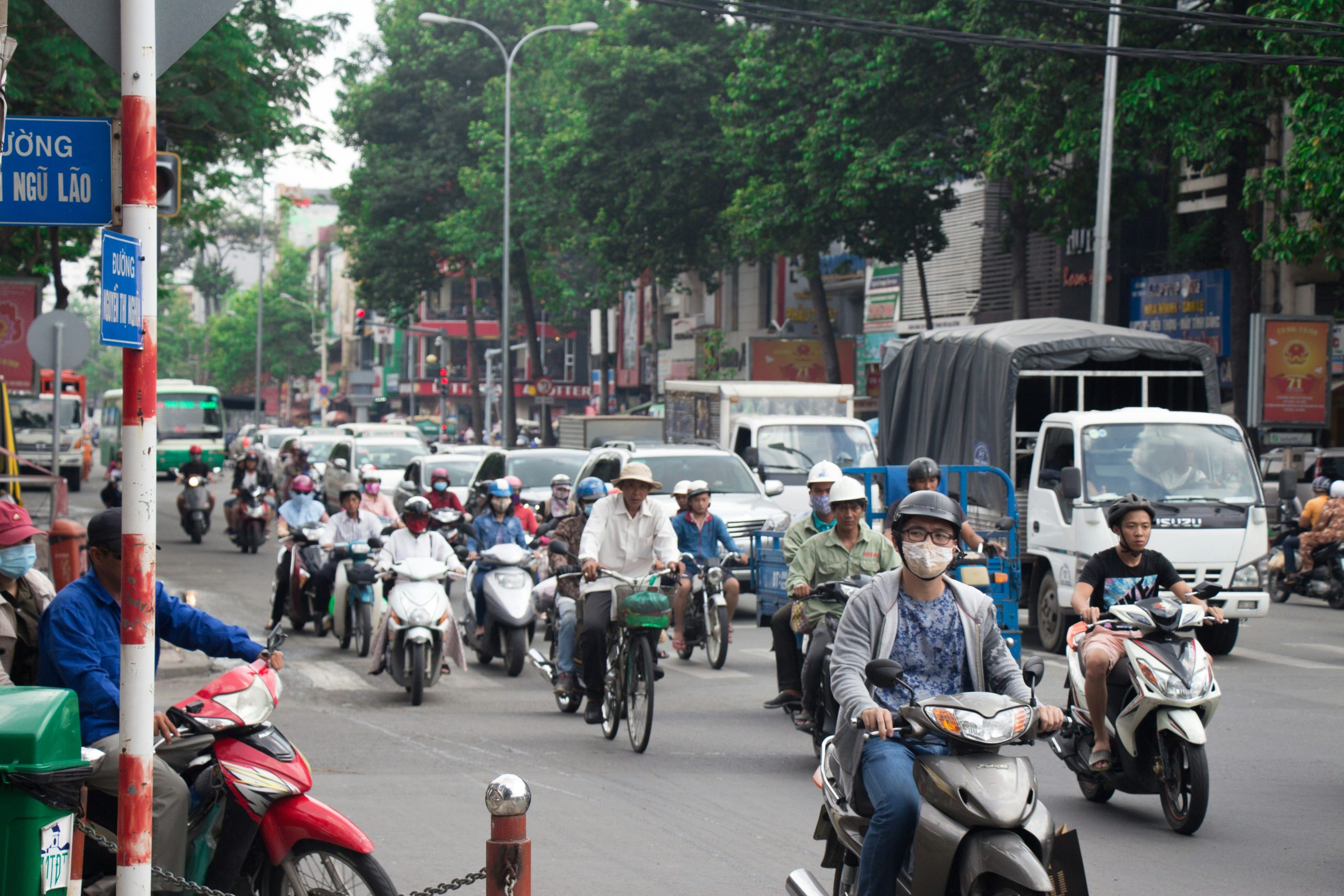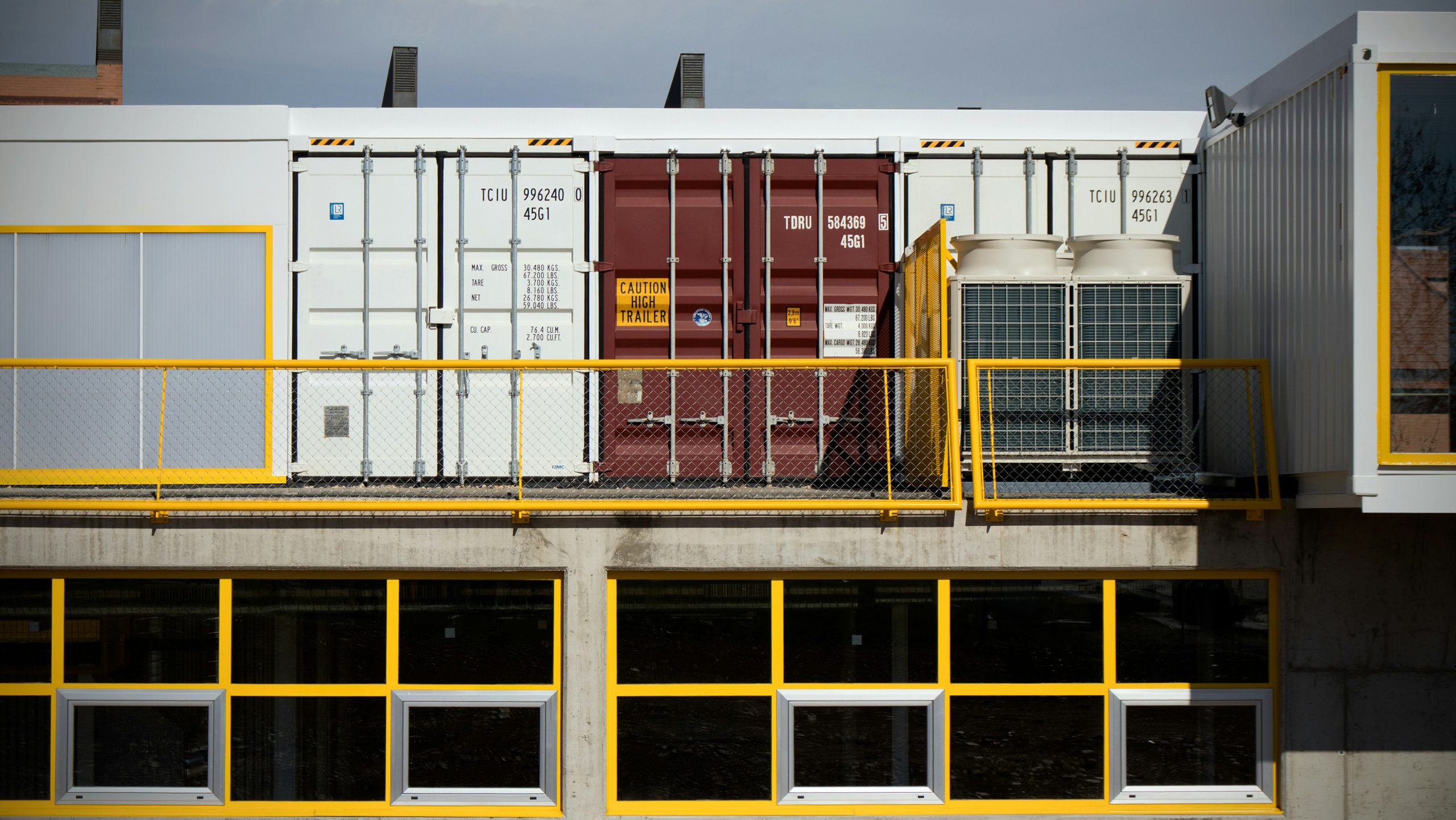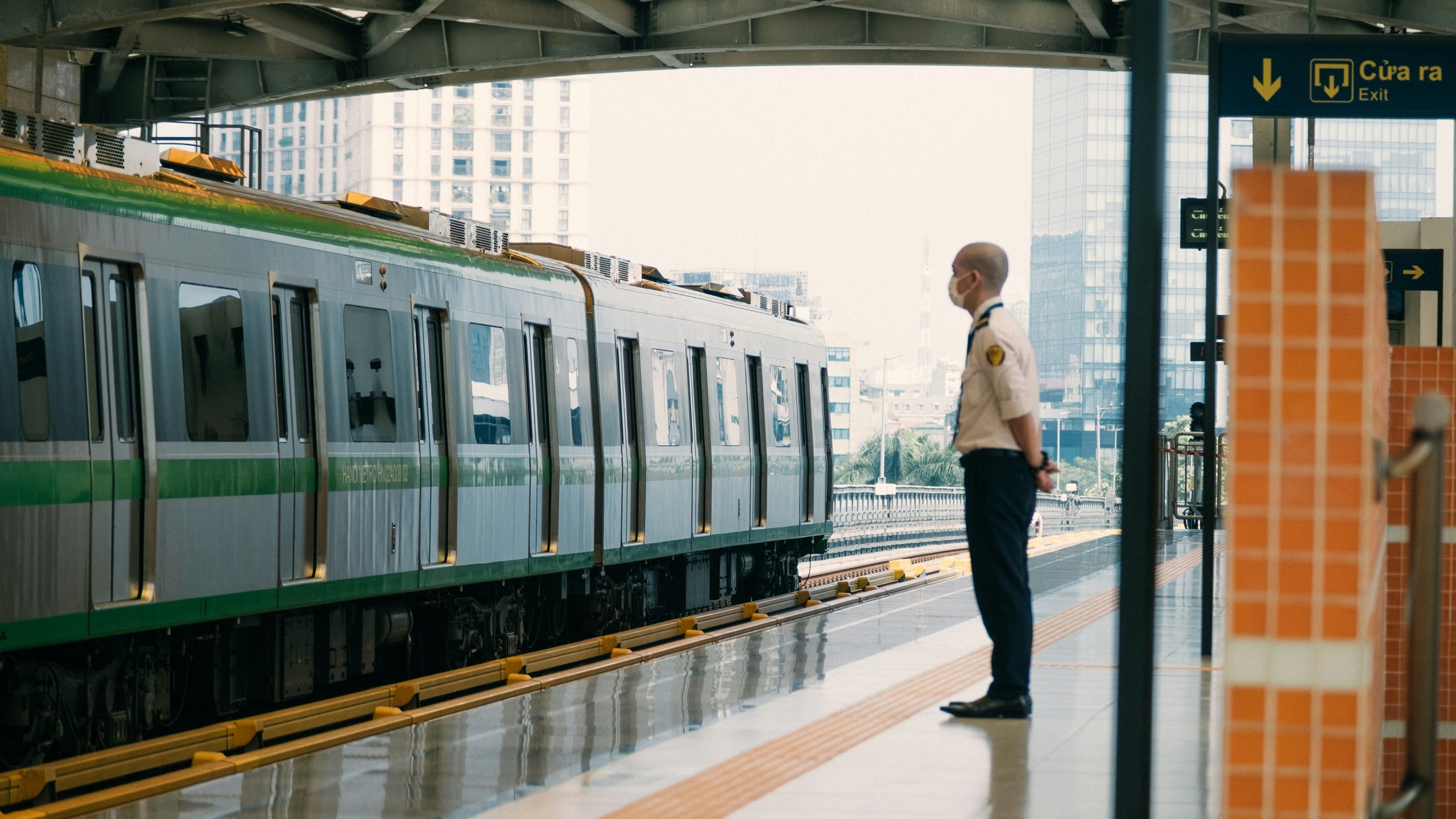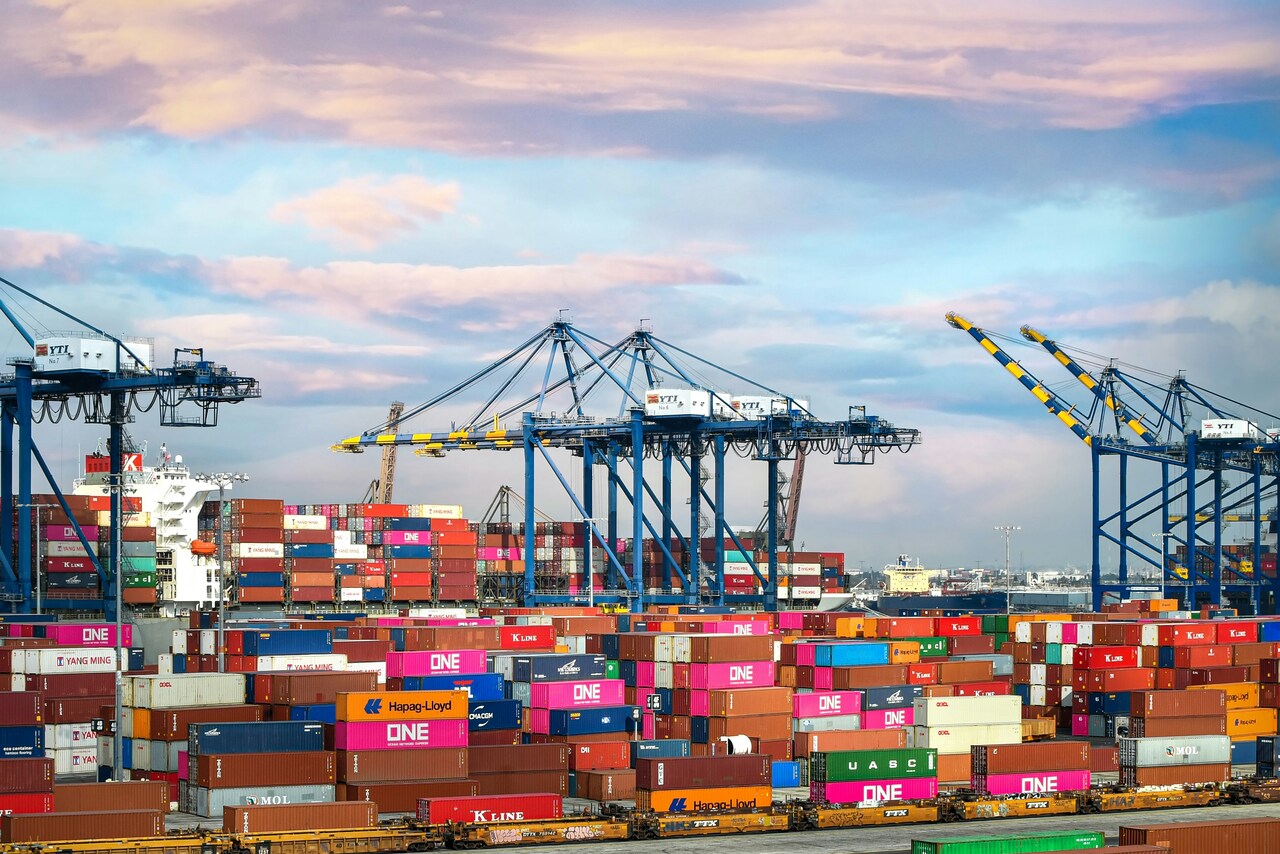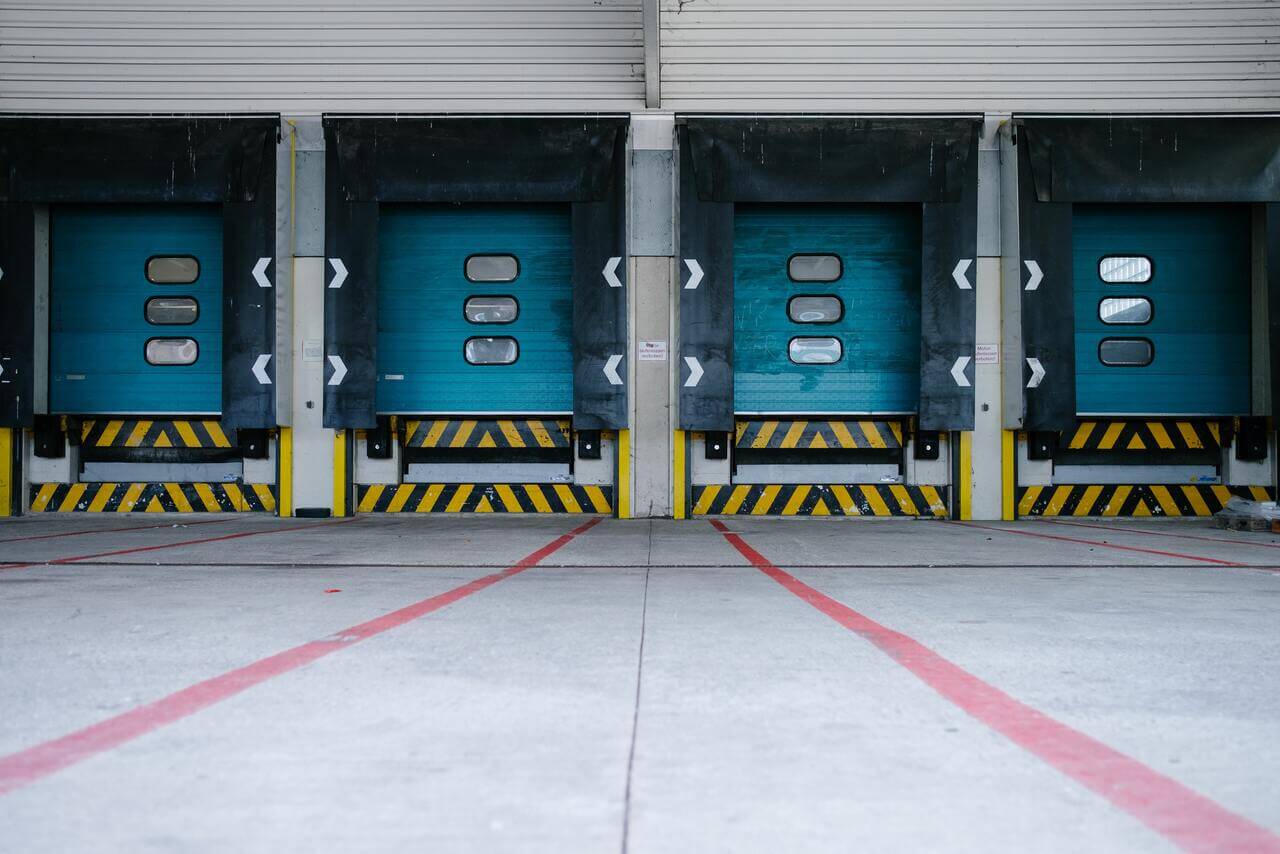
06Jun2025
Latest News & Report / Vietnam Briefing
Comments: No Comments.
Overview of The Current Transport Situation in Hanoi
Hanoi, the vibrant capital of Vietnam, epitomizes rapid urban growth and economic dynamism. However, this prosperity comes with a growing urban challenge — traffic congestion. As one of the fastest-growing metropolitan areas in Southeast Asia, Hanoi’s road networks, public transport systems, and traffic management infrastructure have struggled to keep pace with surging population and motorization rates.
The costs of congestion are staggering. According to recent reports, Hanoi loses approximately 1.2 billion USD annually due to traffic jams1 — stemming from lost productivity, wasted fuel, and pollution-related health costs. Addressing this crisis is critical not only for improving daily life but also for sustaining economic growth and environmental quality.
Population Growth and Urbanization Pressures
Hanoi’s population exceeds 8 million and continues to grow rapidly. According to the Hanoi Department of Population and Family Planning, on average, the population of this capital is expected to increase by approximately 200,000 people each year, equivalent to the population of a large district. At the seminar on the capital’s urban planning for the period 2021-2030, with a vision toward 2050, experts presented scenarios regarding the complexity of Hanoi’s population in the future, with the city expected to have a minimum of 9.5 million people by 2030 and 11.2 million people by 20502.
At the same time, the urban area expanded dramatically between 2000 and 2020, stretching existing infrastructure beyond its capacity3. The influx of rural migrants and rising birth rates mean that the demand for mobility is increasing exponentially, particularly in newly developed residential and industrial zones on the city outskirts.
Population of Hanoi in recent years
Unit: thousand people
Source: GSO
Surge in Vehicle Ownership and Motorization
The majority of commuters in Hanoi use motorcycles. According to a study by the Environmental Magazine in 2022, the number of motorcycles circulating on the roads in Hanoi per hour is 8,765, accounting for nearly 90% of the total vehicles participating in traffic4. Motorbikes’ flexibility suits narrow roads and short trips but creates severe congestion when used en masse.
Car ownership has also skyrocketed in recent years due to rising incomes and lifestyle changes. Although cars take up more road space and often move slower, their numbers continue to grow rapidly, exacerbating road saturation.
According to Hanoi’s Department of Transport, the city sees nearly 200,000 new vehicle registrations annually, with private cars increasing at a faster pace than motorbikes.
Source: B&Company synthesis from Vietnam Register’s published data
This situation has led to infrastructure deficiencies and challenges in traffic management, including:
– Aging and Insufficient Road Networks: Much of Hanoi’s road infrastructure was designed decades ago for much smaller traffic volumes. Narrow streets, a lack of grade separation, and limited arterial routes create bottlenecks.5
– Poor Traffic Signal Coordination: Traffic lights are often uncoordinated and based on fixed timing schedules, which do not adapt to real-time congestion. According to the Traffic Police Department of Hanoi Police, “Currently, Hanoi does not have an intelligent traffic control system. The entire traffic signal system operates and is set on fixed cycles. Therefore, the traffic lights in Hanoi lack flexibility.” This has contributed to increasing pressure on the city’s traffic.6
– Limited Public Transport Options: The public transit network remains underdeveloped relative to demand. Although Hanoi has 214 bus routes, the demand fulfillment rate has only reached 21.5%, far from the target of 45-50% by 2030. Notably, in contrast to the rapid increase in private vehicles (with cars growing by 11.5% annually from 2020 to 2025). In addition, the urban railway system has only been partially put into operation, accounting for 18.75% of the planned capacity. The air traffic at Noi Bai Airport is already overloaded by 27% of its designed capacity, while the potential of waterway transportation has only been exploited to 22%.
Economic and Social Impacts of Traffic Congestion
Hanoi’s disproportionate development of transportation infrastructure (with an increase of only 0.03% per year) is causing Hanoi to lose 1.2 billion USD annually due to traffic congestion7. This loss is attributed to several factors, including wasted fuel, as vehicles consume significantly more fuel when idling or moving slowly in traffic jams; lost work hours, with commuters spending an average of 60-90 minutes daily in traffic, resulting in reduced productivity for businesses; and supply chain delays, as freight and delivery services face unpredictable travel times, leading to increased costs and decreased reliability.
Not only that, Hanoi frequently ranks among Southeast Asia’s most polluted cities, with transportation being a leading contributor to air pollution. Traffic emissions increase levels of particulate matter (PM2.5), nitrogen oxides (NOx), and carbon monoxide, exceeding the safety thresholds set by the WHO. Additionally, persistent traffic noise adversely affects both physical and mental health, while prolonged exposure to vehicle emissions is linked to respiratory diseases, cardiovascular problems, and other health issues among Hanoi residents.
The quality of life is also impacted by stress and fatigue, as long, unpredictable commute times increase commuter stress and reduce time for family and leisure. Safety concerns are prevalent, with the high density of mixed traffic contributing to frequent accidents, particularly affecting vulnerable road users like pedestrians and motorcyclists. Moreover, traffic congestion disproportionately affects low-income residents who rely on slower, less comfortable modes of transport and have less access to private vehicles
Hanoi’s Annual Air Quality Index in recent years
Source: B&Company (Air data 360)
To address the complex traffic situation in Hanoi, the Vietnamese government has introduced a series of solutions including:
– Infrastructure projects like new ring roads (Ring Road 3 and 4), expressways, multiple bridges over the Red River9, and pilot dedicated bus lanes to improve public transit.10
– Public transport expansion features the operational Metro Line 2A with more lines planned by 203011, bus fleet modernization with electric and low-emission vehicles, and emerging shared mobility options such as bike-sharing and e-scooters.12
– Policy measures involve motorbike restrictions in central areas during peak hours, proposed vehicle ownership limits, and enhanced law enforcement with increased fines and surveillance.13
Despite these efforts, congestion remains a significant challenge, and experts are highlighting the need for new solutions that really can solve the problem at its root.
The Role of Smart Transport Solutions in Hanoi’s Future
According to experts, smart transport solutions that leverage technologies such as IoT, AI, big data, and connectivity to improve traffic management and mobility services may partly alleviate traffic congestion14. These solutions include intelligent traffic management systems with adaptive signals and real-time monitoring, vehicle-to-infrastructure (V2I) communication to optimize flow and safety, and smart public transit featuring digital ticketing and dynamic scheduling to enhance reliability.
Additionally, Mobility-as-a-Service (MaaS) integrates multiple transport modes through unified apps, while electric and autonomous vehicles support cleaner and more efficient urban transport15. At the same time, campaigns encouraging people to shift from private vehicles to public transit, improve safety, and promote sustainable transportation options will be key to reducing vehicle emissions and improving air quality in Hanoi.16
Intelligent traffic monitoring system at intersections in Hanoi
Source: thanglong.chinhphu.vn
Opportunities and Challenges for Japanese Enterprises in Hanoi’s Smart
Hanoi’s growing market presents significant opportunities for Japanese enterprises that possess advanced expertise in smart transport technology, including intelligent traffic systems, public transit innovation, and eco-friendly mobility solutions. There are some of the notable initial projects include:
– Sumitomo Electric Corporation has consulted with the Vietnamese government about implementing an Intelligent Traffic Management System, leveraging proven models from Japan such as Tokyo’s advanced traffic control network.17
– On February 24, 2025, Jigowatts Co., Ltd. (Tokyo) — a company specializing in electric vehicle charging equipment — signed a strategic partnership agreement with Mai Hoa Holdings (Hanoi) to develop EV (Electric Vehicle) charging infrastructure across Vietnam.18
– In 2022, Tokyo Metro supported MRB Hanoi in training on technical aspects such as construction project acceptance, architecture, electrical systems; locomotives and carriages; and system interlocking testing before the Nhon-Ha Noi project is put into commercial operation.19
Not stopping there, the Hanoi city government is also gradually taking proactive steps to open up and encourage Japanese businesses to invest in the city’s transportation infrastructure. Notable efforts include:
– Encouraging and inviting Japanese businesses to invest in infrastructure and the environment, with a promise to create favorable investment conditions for Japanese companies in general and those from Osaka in particular.20
– Organizing business and technology seminars on Japanese companies in the infrastructure sector, with the aim of connecting and introducing Japanese businesses that can support the Ministry of Construction of Vietnam in the development of infrastructure and urban transportation.21
– Regarding administrative procedures, Hanoi’s government has been making significant efforts to reduce and simplify administrative procedures with the goal of eliminating at least 30% of investment and business conditions; reducing at least 30% of the time required to process administrative procedures22 to create favorable conditions for citizens and businesses, including foreign enterprises. According to the Hanoi Department of Planning and Investment, in the first 7 months of 2024, Hanoi attracted 1.3 billion USD in FDI, a 65% increase compared to the same period in 2023.23
The Government of Hanoi city is continuously making efforts to change mechanisms and reform administrative procedures to open doors for foreign businesses
Source: vpcp.chinhphu.vn
It is clear that there are great opportunities for Japanese companies to enter Hanoi’s smart transportation market. However, Japanese businesses also need to carefully consider some potential issues that may arise, such as:
– Cultural and regulatory differences: Adapting to Hanoi’s local policies, business environment, and legal framework requires careful research and strategic adjustments. Companies need to take the time to understand the licensing process, investment regulations, and technical standards in Vietnam in general and Hanoi in particular.24
– Complexity in infrastructure integration: Current infrastructure limitations may pose challenges in integrating advanced smart systems from Japan. Companies may need to invest in upgrading or developing customized solutions to be compatible with the existing systems.25
– Large capital investment: Initial implementation of advanced technologies may require a significant financial outlay, necessitating strong public-private partnerships to mitigate financial risks and share the investment burden26
– Data security and privacy: Managing large volumes of traffic and personal data in Hanoi requires robust cybersecurity measures and building public trust. Companies need to ensure compliance with data protection regulations in Vietnam and demonstrate a commitment to information security27
– Competition: Not only Japan, but South Korea and Europe are also collaborating with the government of Hanoi city to develop transportation infrastructure. This may lead to an increase in competition as companies from South Korea and Europe are also exploring entry into the Vietnamese market. Japanese companies need to develop a differentiated strategy and clear competitive advantages to stand out28
However, Japanese companies that combine technological excellence with localization strategies, collaboration with the government, and community engagement will be in the best position to thrive in Hanoi’s smart transportation transformation process
One of the dialogue conferences organized by the Hanoi People’s Committee to address challenges for foreign businesses
Source: hanoionline
Conclusion
Traffic congestion in Hanoi is a critical challenge with far-reaching economic, environmental, and social impacts. While current infrastructure and policy efforts provide a foundation, the transformative promise lies in smart transport solutions powered by technology and innovation.
For Japanese enterprises, Hanoi represents a dynamic and promising market, rich with opportunities to deploy advanced smart mobility technologies but accompanied by notable operational and regulatory challenges.
With strategic cooperation among government, private sector, and citizens, Hanoi can evolve into a smart, sustainable city, easing congestion and improving quality of life.
1 https://vneconomy.vn/ha-noi-mat-1-2-ty-usd-nam-vi-tac-nghen-giao-thong.htm
2 https://vnexpress.net/ba-kich-ban-dan-so-ha-noi-den-nam-2030-4679530.html
3 https://openjicareport.jica.go.jp/
5 https://vnexpress.net/mat-do-giao-thong-nhieu-tuyen-duong-ha-noi-vuot-6-8-lan-thiet-ke-4703340.html
6 https://viettimes.vn/bai-2-phong-canh-sat-giao-thong-ha-noi-noi-gi-ve-giai-phap-thay-doi-nhip-den-tranh-un-tac-post164915.html
7 https://vneconomy.vn/techconnect/ha-noi-mat-1-2-ty-usd-nam-vi-tac-nghen-giao-thong.htm
8 About the AQI scales: https://aqicn.org/scale/
9 https://laodong.vn/giao-thong/ha-noi-sap-khoi-cong-2-cau-qua-song-hong-thuoc-duong-vanh-dai-4-1510994.ldo
11 https://vneconomy.vn/ha-noi-rong-mo-loi-di-cho-duong-sat-do-thi.htm
14 https://baophapluat.vn/giam-un-tac-giao-thong-bang-ung-dung-so-post522657.html
16 https://kinhtedothi.vn/ha-noi-khuyen-khich-nguoi-dan-tich-cuc-chuyen-doi-su-dung-phuong-tien-xanh.html
17 https://mt.gov.vn/vn/tin-tuc/33443/ung-dung-cong-nghe-giao-thong-thong-minh-cua-nhat-ban-toan-canh-hoi-thao.aspx
18 https://denkei.com.vn/3-du-an-nha-may-va-ha-tang-cong-nghiep-moi-nhat-ban/
20 https://kinhtedothi.vn/ha-noi-khuyen-khich-doanh-nghiep-nhatdau-tu-vao-ha-tang-moi-truong
21 https://xaydung.gov.vn/
22 https://laodongthudo.vn/don-gian-hoa-it-nhat-30-thu-tuc-hanh-chinh-cho-doanh-nghiep-185492.html
24 https://phaply.net.vn/doanh-nghiep-de-xuat-ha-noi-thao-go-nhieu-kho-khan-a253841.html
25 https://www.quanlynhanuoc.vn/2025/04/03/hanh-vi-dau-tu-xanh-cua-cac-doanh-nghiep-dau-tu-truc-tiep-nuoc-ngoai-tren-dia-ban-thanh-pho-ha-noi/
26 https://vov.vn/kinh-te/go-vuong-de-doanh-nghiep-fdi-thuan-loi-dau-tu-post1097604.vov
27 https://mst.gov.vn/thach-thuc-bao-mat-tu-phuong-thuc-lam-viec-ket-hop-197159064.htm
28 https://mt.gov.vn/vn/tin-tuc/87165/nhieu-doanh-nghiep-chau-au-mong-muon-hop-tac–dau-tu-vao-phat-trien-ha-tang-giao-thong-tai-viet-nam.aspx
* If you wish to quote any information from this article, please kindly cite the source along with the link to the original article to respect copyright.
| B&Company
The first Japanese company specializing in market research in Vietnam since 2008. We provide a wide range of services including industry reports, industry interviews, consumer surveys, business matching. Additionally, we have recently developed a database of over 900,000 companies in Vietnam, which can be used to search for partners and analyze the market. Please do not hesitate to contact us if you have any queries. info@b-company.jp + (84) 28 3910 3913 |
